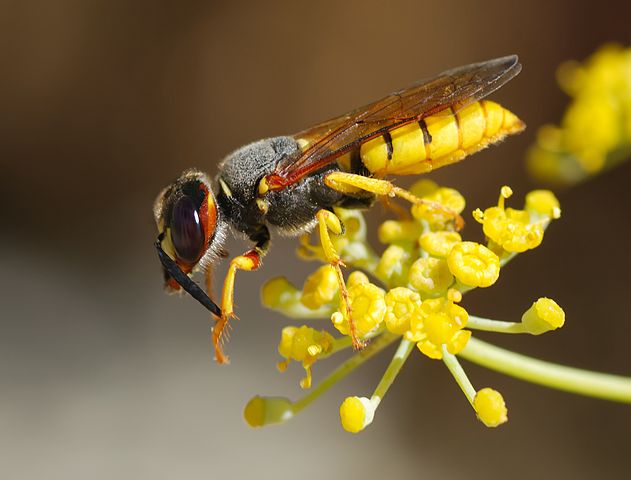29
Sep
Biological Management Has Added Billions in Benefits to Agricultural Economies
 (Beyond Pesticides, September 29, 2020) While the green revolution is often heralded in conventional agriculture circles as the key agricultural innovation of the last century, new research finds that biological controls likely had a bigger beneficial impact on world crop production. The study, Ecological Pest Control Fortifies Agricultural Growth in Asia–Pacific Economies, published in Nature Ecology and Evolution, makes the case that the introduction of predators to manage non-native pest species was just as important as the introduction of new cereal grain varieties.
(Beyond Pesticides, September 29, 2020) While the green revolution is often heralded in conventional agriculture circles as the key agricultural innovation of the last century, new research finds that biological controls likely had a bigger beneficial impact on world crop production. The study, Ecological Pest Control Fortifies Agricultural Growth in Asia–Pacific Economies, published in Nature Ecology and Evolution, makes the case that the introduction of predators to manage non-native pest species was just as important as the introduction of new cereal grain varieties.
“Our work constitutes an empirical demonstration of how insect biological control helped solidify the agrarian foundation of several Asia-Pacific economies and, in doing so, places biological control on an equal footing with other biological innovations such as Green Revolution germplasm,” said study co-author Michael Furlong, PhD, of the University of Queensland, Australia.
The study, focusing in on the Asia-Pacific region between 1918-2018, relied primarily on the BIOCAT database, a record cataloging “classical biological control” introductions. Of 252 unique interventions reviewed within individual countries, pest predators established themselves in 96. Of those roughly 4 in 10 introductions that were able to maintain populations over the long term, 48% achieved full or partial pest control.
The success of these programs had critically important implications for agricultural economies in the region. “Biological control delivered durable pest control in myriad Asia-Pacific agriculture sectors, permitting yield-loss recoveries up to 73%, 81% and 100% in cassava, banana and coconut crops respectively, said Dr. Furlong. “The ensuing economic dividends are substantial, as pest-induced losses up to US $6.8, $4.3 and $8.2 billion annually for the above crops were offset (at respective values of $5.4-6.8 billion, $1.4-2.2 billion and $3.8-5.5 billion/year, for a conservative to high impact scenario range). As many of the underlying programs were run on a shoestring, the rate of return on biological control science is extraordinary.” Overall, the authors indicate that biological controls have brought approximately $20 billion to Asia-Pacific economics on an annual basis.
While, for example, rice yields in Indonesia increased by 303% from its 1961 baseline, yields in banana and cassava grew 1,222% and 323% respectively. Cassava yields were saved in large part due to the introduction of Anagyrus lopezi, a parasitic wasp that preyed on the non-native cassava mealybug. In Papua New Guinea, the country’s banana crop was experiencing 30% yield loss due to the banana skipper Erionota thrax, but was able to reduce pest pressure below economically damaging levels through introduction of the parasitoid Cotesia erionotae.
“Not only does [our work] spotlight [biological control’s] transformative impacts – especially in light of increasing global reliance on chemical pesticides – but it also celebrates the century-long achievements of dedicated, yet often, unacclaimed insect explorers and biological control pioneers.”
Biological control is not without its detractors. Many point to introductions like the cane toad, released in the 1930s to manage Australia’s sugar cane beetles. The poisonous amphibian never established in cane fields and became an invasive pest in its own right. The authors acknowledge this history, noting how “a small number of ill-advised introductions” from the middle of the 20th century led to “a more risk-adverse attitude,” which “eclipsed its myriad societal benefits.”
The present studies highlights the value of these past approaches, both in terms of economic and environmental benefits. Not only can biological interventions save agricultural sectors, their use can also supplant the industrial chemical approach that harms public health and adversely impacts ecological stability.
“By thus placing agro-ecological innovations on equal footing with input-intensive measures, our work provides lessons for future efforts to mitigate invasive species, restore ecological resilience and sustainably raise output of global agri-food systems,” said lead study author Kris Wyckhuys, PhD.
Biological approaches are needed now in many sectors. After years of testing, officials in California are beginning to release Tamarixia radiata wasps to manage Asian citrus psyllids, which cause citrus greening that has devastated the citrus industry. Past reports indicate many New Jersey communities have used copepod crustaceans, voracious predators of mosquito larvae, to control mosquito-borne disease. Goats have also been used across the country as biological weed management at airports, cemeteries, and to restore soil and improve land quality. These techniques provide a viable management approach that does not require the regular, repeated use of toxic pesticides.
Support an ecological approach to food production by purchasing organic whenever possible. Organic land management prioritizes mechanical, cultural, and biological means of managing pests before considering even least-toxic pesticide products. For more information, see Beyond Pesticides Daily News biological control archives.
All unattributed positions and opinions in this piece are those of Beyond Pesticides.
Source: Centre for Agriculture and Bioscience International press release, Nature Ecology and Evolution










